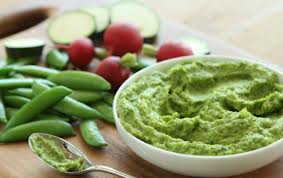The Best At-Home Health Test:from
What’s the easiest, most effective health test you can do at home? Measure your waist.
You can learn much more than your pants size—a waist larger than 36.8 inches increases your risk of heart disease by as much as 60 percent, in addition to myriad other health hazards.
Stephane Gouin’s bulging belt held some scary news for the 35-year-old computer analyst—doctors found he was carrying excess visceral fat around his liver.
Visceral fat is nasty stuff—it surrounds vital organs and releases toxins into the body. It increases blood pressure and cholesterol, and multiplies risks of diabetes, hypertension, heart disease, and death. Gouin thought all that sounded a lot worse than looking flabby on the beach.
“[The stuff] you can’t see is more important than aesthetics,” Gouin says. “[Fixing] my liver issue was the main thing. The rest is a bonus.”
He started addressing those issues in April 2007, dumping a daily fast-food (and 5-soda) habit for a high-fiber diet. He made time for daily cardio and weight-training sessions. By December, he’d lost 35 pounds.
To stay motivated and battle through a weight-loss plateau, Gouin joined Belly Off! in September. Using a home-gym cable system and moves from Fully Loaded, he has started to build muscle and add strength. And he did something more: He began posting and asking questions about blood pressure and other health risks in the Ask an Expert forums.
Belly Off! trainer David Jack was impressed: “[It’s important guys talk] about the things no one else can see, but really matter the most.”
And Gouin isn’t just asking. He’s seeing results. His blood pressure has dipped from 120/85 to 106/64 since the spring, and his resting heart rate has dropped 17 beats to 68 BPM. He’s aiming for 60.
Use these benchmarks to check under your hood—working toward a flat, firm stomach is fantastic, but these measurements can help you enjoy them for a longer, healthier life.
Blood pressure: “Your blood pressure measures how hard does your pumper has to work to push blood around your body,” says Andrew Accardi, M.D., Scripps Memorial Hospital Encinitas in Encinitas, California.
The risks: Heart attack, stroke
Your target: 120/80 is the established norm, but Accardi says to aim for less than 140/90.
Resting heart rate: Think of your heart like a car. Do you want to drive a fuel-guzzling jeep, or an efficient hybrid? “When you exercise and lose weight and your muscles become more efficient, you get more miles per gallon. If you get more miles per gallon, your heart doesn’t have to pump as much,” Dr. Accardi says.
Your target: Between 50 BPM and 70 BPM. A higher rate is a sign of you’re out of shape.
Test yourself: For a quick self-test, find your average BPM by placing your index and middle finger behind the crease of your wrist. Count the pulse rate for 15 seconds, then multiply it by four.
Cholesterol: Cholesterol is an indicator of fat in the blood.
The risks: Heart attack, stroke
Your target: Total cholesterol less than 200. LDL (“bad cholesterol”) less than 100. HDL (“good cholesterol”) more than 60.
Blood glucose: A glucose test measures the sugar in your blood. Numbers fluctuate throughout the day: If you eat a piece of toast, it goes up; if you’re starving, it goes down. Insulin created in the pancreases is in charge of stabilizing blood sugar.
The risks: Diabetes
Your target: Less than 200 mg/deciliter
-
Add Support, Subtract Weight:
In the battle to lose your belly, strength comes in numbers. But not r
-
Gluten: Weight Problems:
Turkey and tomato on wheat. Whole-grain pasta. Healthy, right? Maybe.
-
Is Your State Fat and Lazy? Well, Yes
New obesity stats are in, and the results are about as optimistic as a
-
Don’t Fear Fat
More evidence suggests that a high-fat, low-carb diet is better for we
-
Beach Body Weight Loss Success Story
Meet Tracey FacklerJob: Sales coordinator Home: Hummelstown, Pennsylva
-
Is Your Thyroid Making You Fat?
I’ve got a funny … and sad story to tell you today. We were flying hom
- DON'T MISS
- Is Your State Fat and Lazy? Well, Yes
- How Loud Noise Affects Your Taste
- Kill Cravings with Video Games!
- Flatten Your Belly:
- The Amount of Weight to Lose to Protect Against Heart Disease and Diabetes
- Belly Off: Rock-Climbing Weight Loss Success Story
- Identify Whats Stopping You from Losing Weight
- Belly Off: A Fathers Weight Loss Success Story
- Check out the Abs Diet weight loss success story of Richard Langdon,
- Weight-Loss Lies




